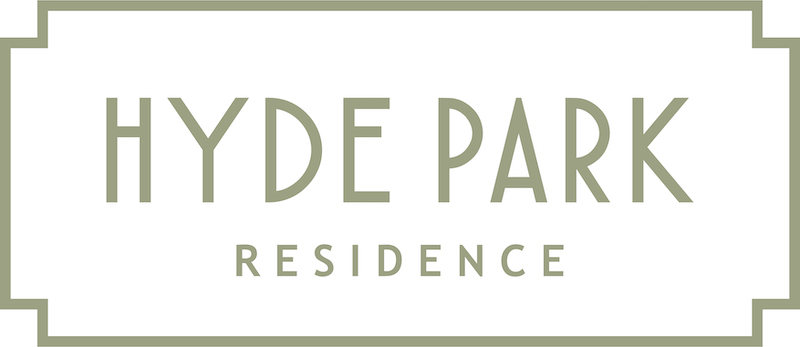Mayfair is famed for its pretty streets, historic architecture, boutique shops, cafés, restaurants and bars. But with so much on offer, navigating your way through the picture-perfect neighbourhood is not always straightforward. We are here to guide you through our charming Mayfair village.
Table of Contents
where is mayfair located?
Mayfair is nestled in west London, bordered by Hyde Park, St James’s Park, Marylebone and Soho. It is situated within the City of Westminster borough, home to some of the UK’s most famous landmarks including Buckingham Palace, Trafalgar Square and Westminster Abbey.
what are the most famous landmarks in mayfair ?
With historic Piccadilly to the south and the vibrant nightlife of Soho to the east, Mayfair provides an oasis of Georgian glamour interwoven with Queen Anne architecture. With elegant grand streets and immaculate green squares, the most skilled designers in the tailoring world on Savile Row, and the cosy nooks and winding alleys of Shepherd Market, Mayfair works its charms on all who stay here. Some of Mayfair’s top destinations include Bond Street, Grosvenor Square, the Royal Academy of Arts, the ever-stylish glamour of Mount Street and of course, the world-famous Park Lane. You will find us to the west of the Park, at 55 and 60 Park Lane.
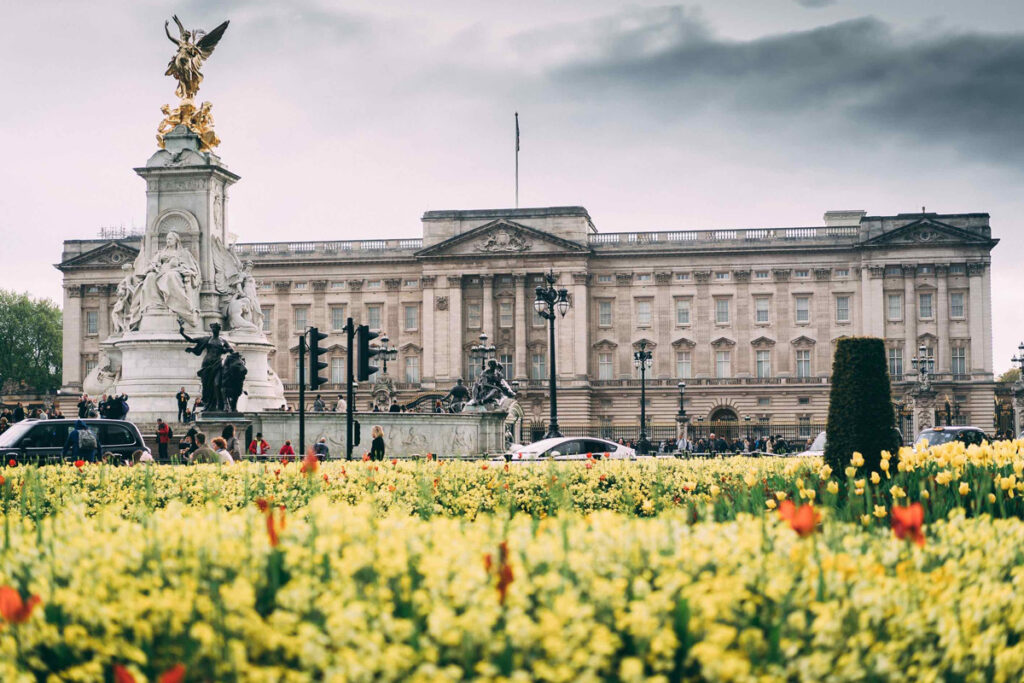

how do i get to mayfair?
Mayfair is located in the heart of London, nestled at the most central point of west London. As a result the area boasts excellent transport links, with proximity to major hubs like Paddington, Victoria, and King’s Cross train stations, which provide easy access to national and international destinations. Perhaps confusing to some newcomers, there is not a specific tube station called Mayfair. Instead, several underground stations serve the area, including Bond Street, Green Park, and Hyde Park Corner, connecting the area to the rest of London via the Jubilee, Central, Piccadilly, and Victoria lines. There are also many reliable bus services for travel within and beyond Mayfair. These transport links make Mayfair easily accessible for both residents and visitors alike.
what is the mayfair postcode?
All postcodes in Mayfair start with either W1J, W1K or W1S. The postcode at Hyde Park Residence is W1K 1NA. The W stands for ‘west’ and the number one is reserved for the most central addresses in London. As to the J, K and S, the letters are assigned alphabetically by district.
W1J: Mayfair (south), Piccadilly
W1K: Mayfair (north), Grosvenor Square
W1S: Mayfair (east), Hanover Square, Savile Row, Royal Academy
P.G. Wodehouse chose Half Moon Street as the Mayfair home of Bertram Wooster, the fictional upper-class star of his Jeeves and Wooster comic novels. For those who haven’t read them, Jeeves is Wooster’s wry valet, and between these two characters, many entertaining adventures ensue.
The history of Mayfair, London
the may fair – where mayfair got its name
The area known today as Mayfair, London, first rose to prominence in the late seventeenth century, and has been a fashionable residential district for over three centuries. The area got its name from the annual “May Fair” set up by King James II, which ran from 1686 to 1764 in what is now Shepherd Market. The market is named after the architect Edward Shepherd, not after the May Fair’s produce! The fair was however renowned for being a hotbed of boisterous and unruly happenings in its day but now Shepherd Market is a charming little square with narrow side streets where you will find independent boutiques, restaurants and impressive Victorian pubs.
the grosvenor family’s pivotal role in mayfair’s history
One of the key developments in Mayfair’s evolution was the building of Grosvenor Square in the 1720s, by the Grosvenor family – whose name is still associated with many of Mayfair’s most famous landmarks. The Square was a short carriage-ride to the most important destinations of the time: St James’s Palace, the Theatre Royal in Covent Garden (now the Royal Opera House) and parliament, alongside clubs, coffee houses and more nefarious establishments. This prime location quickly made it a favourite base for the country’s most powerful families. As the series Bridgerton colourfully captures, this world of exotic fabrics and luxurious fashion solidified the area’s reputation as the home of luxury in London.
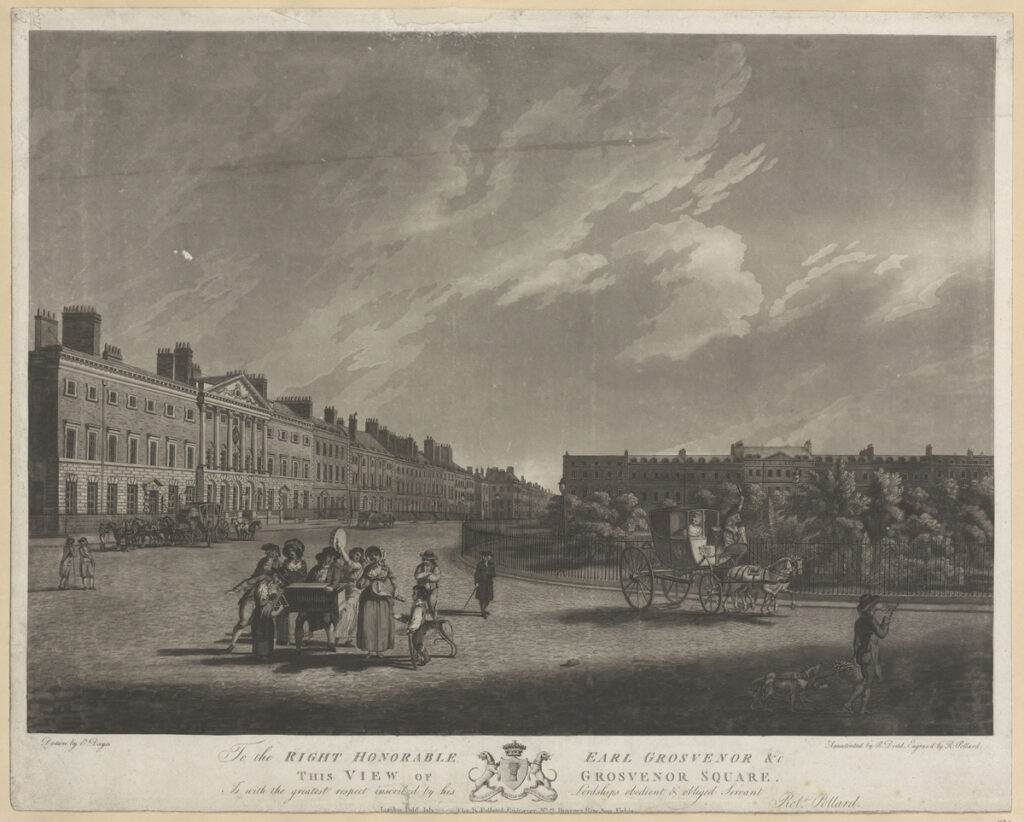
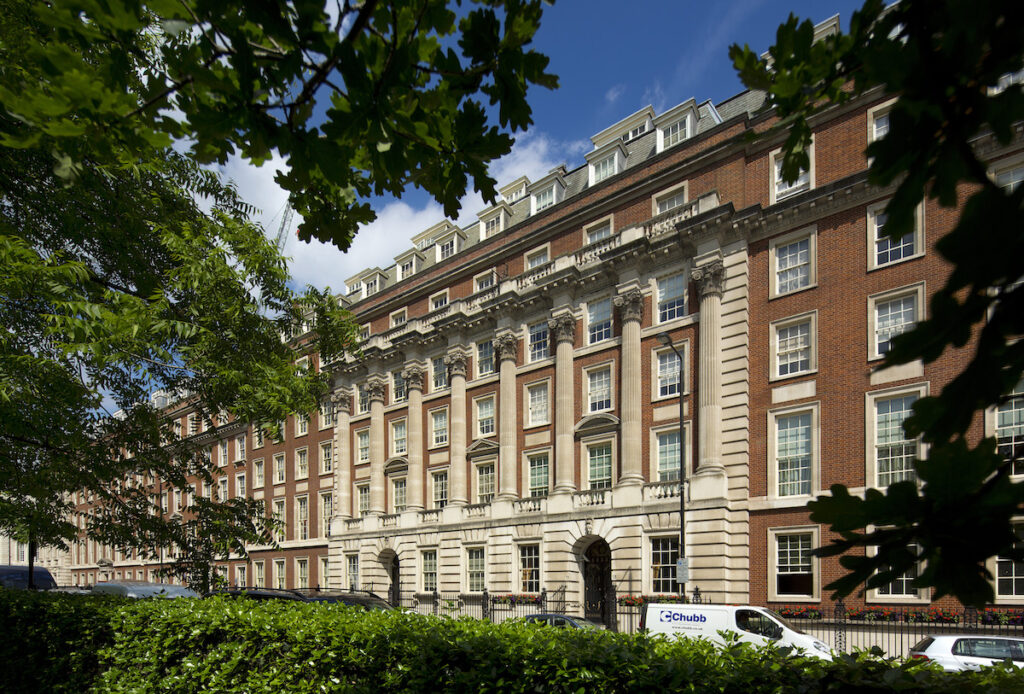
the blitz and its aftermath
The heavy bombing of London in the Second World War forced many businesses to relocate from their “city” addresses to Mayfair, where they converted residential homes into offices. In fact, the American Embassy had its headquarters in Grosvenor Square until 2008. However, many other buildings began to be reclaimed for residential use in the 1990s, building Mayfair’s reputation as the leading district for period conversions and grand freehold townhouses. Curzon Street is home to Crewe House, one of the few eighteenth century Mayfair mansions still standing.
Things to do in Mayfair, London
the mayfair lifestyle
Mayfair, encompassing Mount Street, Audley Street, Park Lane, Grosvenor Square and various other iconic localities, is synonymous with a luxurious and sophisticated lifestyle. Renowned for its affluent residents, beautiful architecture and rich history, Mayfair exudes elegance and refinement. The neighbourhood boasts high-end boutiques, exclusive art galleries, and Michelin-starred restaurants, attracting discerning connoisseurs of fashion, art, and gastronomy. Residents enjoy a vibrant social scene, with prestigious members-only clubs and glamorous cocktail bars dotting the area. The leafy squares and private gardens offer serene retreats amidst the bustling city. Mayfair’s proximity to historic landmarks such as Wellington Arch, Hyde Park and Buckingham Palace, adds to its allure. Living in Mayfair epitomises a life immersed in the finest things that London has to offer.
royal parks and secret squares
With its vast green spaces and manicured garden squares there’s no shortage of places to find some peace and quiet around Mayfair. Four out of the eight Royal Parks are within walking distance: Hyde Park, Kensington Gardens, St James’s Park and Green Park. Each park offers mature trees and large swathes of lawn and meadow, with special features including playgrounds, lakes, sports facilities, cafés, fountains, sculpture and galleries.
Grosvenor Square is the second largest square in London, where you can relax on a bench alongside classically-inspired landscaping. Brown Hart Gardens is a raised terraced garden built in 1906 above the old Duke Street electricity substation and offers a rejuvenated oasis close to Oxford Street and Bond Street station.
For us, you can’t beat “the hidden gem of Mount Street Gardens”, says General Manager James Partridge. “There are fountains, tropical palm trees, a sculpture. It’s beautiful.” Tucked away off Mount Street – the jewel in Mayfair’s crown – the garden is filled with plants, wildlife and benches from which to enjoy it all.
5 things to do in Mayfair, London
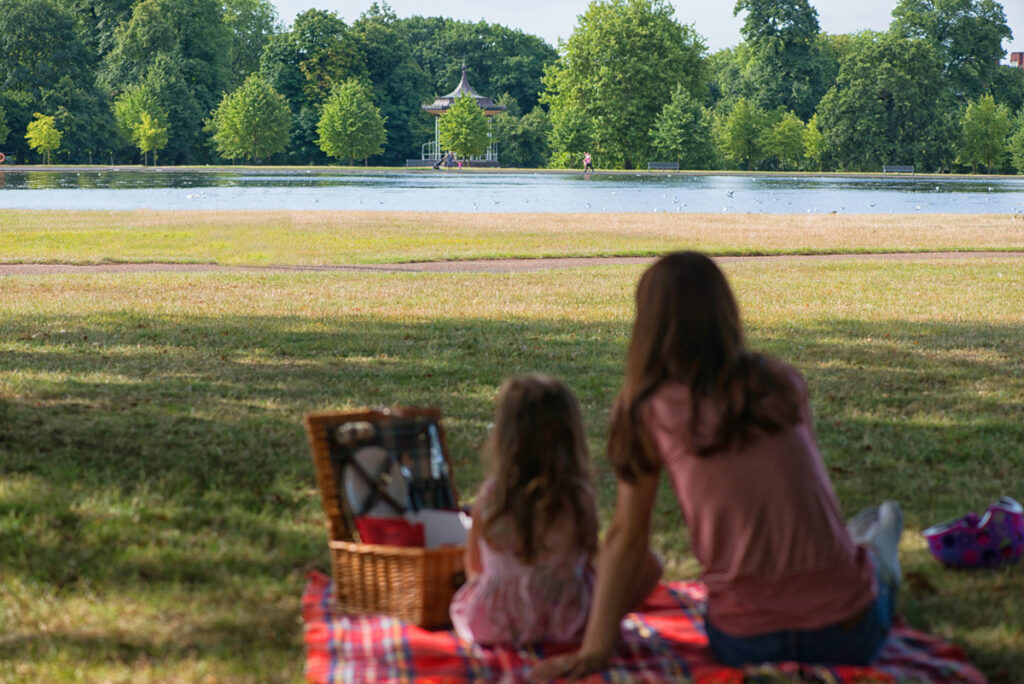
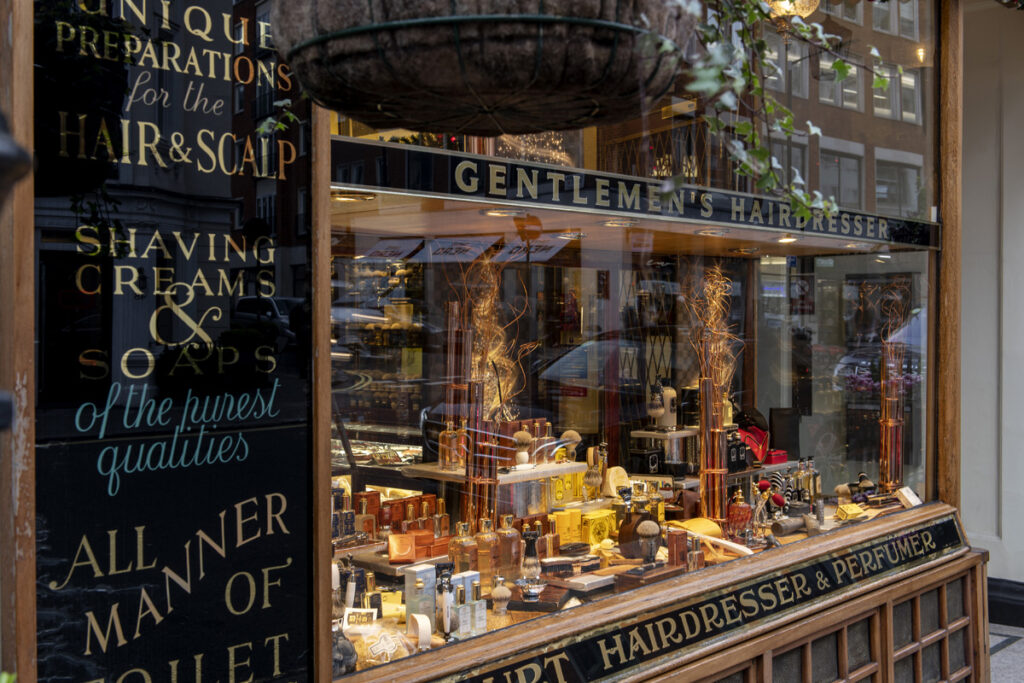
shopping in mayfair
Mayfair is renowned for its exclusive selection of shops. Wind your way through boutiques and independent establishments like the classic Geo F Trumper, a men’s barber and perfumer established in 1875. Browse luxury brands including Cartier, Balenciaga and Boudi Fashion, alongside the prestigious department stores Selfridges and Fortnum & Mason. The historic Burlington Arcade opened in 1819 “for the sale of jewellery and fancy articles of fashionable demand, for the gratification of the public.” Today, it has 51 independent boutiques selling everything from hats to macarons. We highly recommend treating yourself to a bespoke box of Ladurée macarons to enjoy in your apartment!
mayfair’s art galleries and museums
As an area synonymous with sophistication, it follows that Mayfair would have a vibrant art scene and is home to a multitude of prestigious art galleries. Visitors can explore a diverse array of modern and contemporary art, perusing the likes of Gagosian, White Cube, and Hauser & Wirth – world-leading contemporary galleries from both established and emerging artists. For lovers of classical art, the Royal Academy of Arts and the Wallace Collection exhibit masterpieces from renowned artists. Mayfair’s art galleries attract collectors, art enthusiasts, and visitors seeking cultural experiences, making it a must-visit destination for art lovers in London.
the best restaurants in mayfair
It’s almost impossible to try and condense the banquet of delicious fare found within Mayfair village into a short paragraph. Whether you’re looking for gourmet feasts, light bites or on-the-goodness, every kind of cuisine is on offer – from the archetypal British staple of fish and chips from the Mayfair Chippy to the acclaimed BiBi Restaurant rethinking Indian cuisine, or the fresh, timeless tang of Bentley’s Oyster Bar. You can find out more about the best places to eat in Mayfair here.
Where to stay in Mayfair?
Whether you’re a road-wearied traveller, on a business trip and seeking something for the whole family, London’s Mayfair has an abundance of upscale options that cater to discerning travellers looking for shorter stays. Luxury hotels – such as The Dorchester, Claridge’s, and The Connaught – offer lavish rooms, impeccable service, and amenities like spa facilities and Michelin-starred restaurants. For a more intimate experience, boutique hotels like The May Fair and Flemings Mayfair provide a blend of elegance and personalised hospitality.
If you’re looking for a longer stay paired with the comfort of home, there are a variety of serviced apartments in Mayfair, with fully equipped kitchens and spacious living areas. (You can find out more about our flexible serviced apartments here.) Whether it’s a grand hotel or a cosy apartment, staying in Mayfair offers proximity to a charming local area with the rest of London right on your doorstep.
Mayfair village has something for everyone
Mayfair village has something for everyone. It’s why we love living in Mayfair – all the charm of English village life found within the heart of central London. Bordered by three leafy Royal Parks, Mayfair offers a unique blend of tranquillity and luxury, with designer boutiques, fine dining and art galleries. Step beyond and you’re back in our vibrant, bustling city with everything at your fingertips for the most modern cosmopolitan experience.
FAQS
Mayfair is located in the central part of west London, England, specifically in the City of Westminster.
The Mayfair postcode is W1.
Mayfair is generally considered a safe neighbourhood with a low crime rate.
The area is famous for its affluent residents, upscale shopping streets like Bond Street, world-class art galleries, exclusive members-only clubs, and its reputation as a luxurious and high-end area of London.
book your stay with us
We are now taking reservations for your arrival

